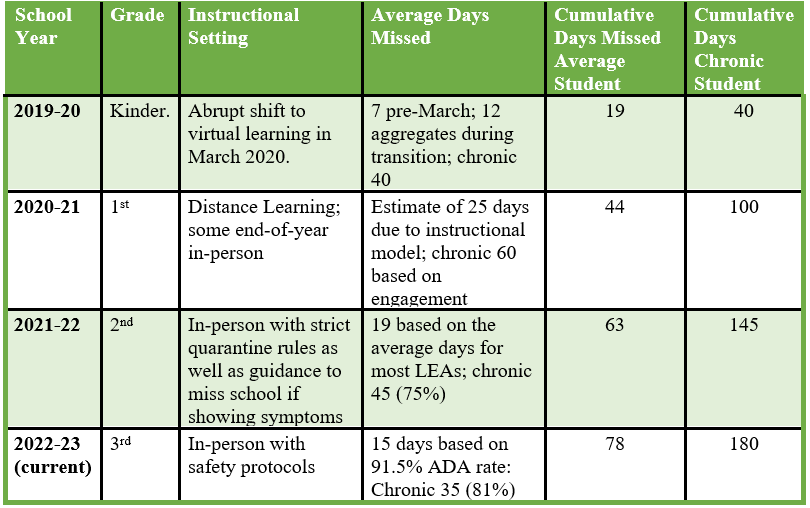If You Feed Them, They Will Come: Creating a Program to Change Attendance Behaviors
- Kelley McKasy
- Feb 21, 2023
- 3 min read

As a teacher, I always focused on being a lifelong learner and would attend many different forms of staff development. When I moved to school administration, I found that I was often the leader and facilitator of these trainings. Nothing has been more rewarding than the opportunity to coach and mentor up-and-coming school leaders to support students in greater areas. Just like quality teaching, a good staff development program is focused on the needs of the learning community and served with relevant, and interesting content. The other thing I noticed is that when you respect the learner’s other needs, such as providing food, drinks, and snacks during the training you have a much more receptive audience.
During the pandemic, we quickly recognized that student needs were not being met. From the simple, such as receiving mandatory immunizations, and gaining access to technology both at home and school, to the most essential need of Maslow’s Hierarchy of Needs, access to nutritious meals on a daily basis. This week a study from Syracuse University demonstrated that students in kindergarten who received universal free meals had better attendance than those who did not. This trend continued all the way through grade 3 in the study of 132,353 kindergarten students in New York City.
Since the pandemic, and unfortunately continuing in 2022-2023, we have a national average of close to 30% of ALL students in kindergarten through 3rd grade being classified as chronically absent. The trend is no better for other grades with a slight decline in upper elementary and then significant increases in high school.

The issue of chronic absenteeism has come as a result of new behaviors and attitudes related to the importance of school attendance. The parent of a current 3rd-grade student has never experienced a “real” school year (unless it was with an older sibling). In academic growth, 3rd grade is a benchmark year where early literacy targets are essential for the foundational ability to move into more difficult content in subsequent grades. The students have had their academic careers completely shuffled and a student that is chronically absent today (2022-2023) very likely was chronically absent for the previous years as well. In a review of the data of a sample of more than 1 million students, there was a corresponding trend that over 60% of today's chronically absent students were chronically absent in previous years as well and this data crossed all grade spans from K – 12. The table below references the impact of lost instructional time for our 3rd graders:

Viewing the chart we still see the average student is missing double-digit days of instruction and is closing in on having missed one-half of a year of instruction. Our chronic students, however, have conservatively missed one full year of instruction. Understanding that 67% of students who drop out of school and fail courses were first chronically absent and recognizing that once a student crossed double digits in yearly absents (below 95%), there is a proportional decrease in academic achievement (A and B students become C and D achievers), there is an urgent need to change attendance behaviors. If this alone was not enough to motivate all districts to react, maybe understanding that this is the future workforce that we hope will be able to pay into the system to cover the pensions of the workforce today!
What can we do about this concerning trend?
Many ideas are floating around, including Texas and California looking at funding by enrollment versus ADA. These movements miss the point; we must work to educate both students and parents to understand the significant life-long benefits of attendance before we end up with a lost generation of learning.
If school districts implement the following 3 actions between now and the end of this school year, then we can set a foundation to begin to improve these attendance patterns that are focused on the academic outcomes of all students.
Commit, at a district level, to implementing a structured and equitable attendance management monitoring system that will permanently provide support to all students in monitoring and intervention of attendance-related behaviors.
Begin a proactive communication campaign that will consistently support students and parents at each grade span to understand the benefits of good attendance behaviors for the long term.
Provide a welcoming school environment that will attract and support students and families to want to be at school through improving facilities, providing nutritious meals, enhancing program offerings, focusing on the socio-emotional learning needs of students, and being receptive to listening to the needs of our stakeholders. Simply put implement an NFS model of support by knowing the:
a. Name
b. Face
c. Story
of each, and every, student we serve, especially focusing on identifying the year-over-year chronically absent students to triage them back into our educational system while simultaneously and proactively reaching all families to reinforce the need for a focus on attendance to ensure academic outcomes that meet their goals for the future.






Comments